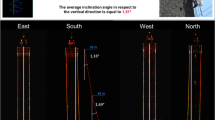Abstract
The use of Terrestrial Laser Scanner (TLS) is quite common for architectural surveys, however it requires to arrange special targets on the scanned object and to acquire several overlapping scans, which have to be aligned and edited externally. Recently, Leica released on the market a new kind of instrument, known as MultiStation (MS). It includes both the main characteristics of a TLS and of a Total Station (TS), meaning that no targets are required for the scan alignment, since the whole survey can be directly georeferenced. In this paper, some analyses about the use of this instrument for 3D modelling applications are discussed. First of all, the laser signal response is evaluated considering different materials, acquired using several combinations of distances and incidence angles. Then, the survey of the Casalbagliano Castle is presented and analyzed. All the performed tests show the great potentiality of the MS, allowing to reach accuracies of the order of few millimeters.
Access this chapter
Tax calculation will be finalised at checkout
Purchases are for personal use only
Similar content being viewed by others
References
Grimm, D.E.: Leica Nova MS50: the world’s first multistation. GeoInformatics 16(7), 22 (2013)
Pfeifer, N., Briese, C.: Geometrical aspects of airborne laser scanning and terrestrial laser scanning. Int. Arch. Photogram. Rem. Sens. Spat. Inf. Sci. 36(3/W52), 311–319 (2007)
Pfeifer, N., Höfle, B., Briese, C., Rutzinger, M., Haring, A.: Analysis of the backscattered energy in terrestrial laser scanning data. Int. Arch. Photogram. Rem. Sens. Spat. Inf. Sci. 37, 1045–1052 (2008)
Atkinson, M.J.A.: Dam deformation surveys with modern technology. Doctoral dissertation. University of Southern Queensland (2014)
Milinković, A., Ristić, K., Tucikešić, S.: Modern technologies of collecting and presentation of geospatial data. Geonauka 2(2), 19–27 (2014)
Wagner, A., Huber, B., Wiedemann, W., Paar, G.: Long-range geo-monitoring using image assisted total stations. J. Appl. Geodesy 8(3), 223–234 (2014)
Zámečníková, M., Wieser, A., Woschitz, H., Ressl, C.: Influence of surface reflectivity on reflectorless electronic distance measurement and terrestrial laser scanning. J. Appl. Geodesy 8(4), 311–326 (2014)
Sepasgozar, S.M.E., Lim, S., Shirowzhan, S., Kim, Y.M., Nadoushani, Z.M.: Utilisation of a new terrestrial scanner for reconstruction of as-built models: a comparative study. In: ISARC Proceedings of the International Symposium on Automation and Robotics in Construction, Vilnius Gediminas Technical University, Department of Construction Economics & Property, vol. 32, p. 1 (2015)
Holland, D.A., Pook, C., Capstick, D., Hemmings, A.: The topographic data deluge-collecting and maintaining data in a 21st century mapping agency. Int. Arch. Photogram. Rem. Sens. Spat. Inf. Sci. 41, 727 (2016)
Pagliari, D., Rossi, L., Passoni, D., Pinto, L., De Michele, C., Avanzi, F.: Measuring the volume of flushed sediments in a reservoir using multi-temporal images acquired with UAS. Geomatics Nat. Hazards Risk 8(1), 1–17 (2016)
Agisoft Photoscan. http://www.agisoft.com/
CloudCompare, 3D point cloud and mesh processing software Open Source Project. http://www.cloudcompare.org/
Acknowledgments
The authors thank the students Agostini Cristian, Chinchella Enrico, Ferrari Eugenio, Riccio Simone and Mr. Spagnoli Maurizio for the technical support during the Casalbagliano survey, and the Comune di Alessandria in the persons of Arch. Marco Genovese and Geom. Gianfranco Ferraris for the availability and supplied collaboration.
Author information
Authors and Affiliations
Corresponding author
Editor information
Editors and Affiliations
Rights and permissions
Copyright information
© 2017 Springer International Publishing AG
About this paper
Cite this paper
Fagandini, R. et al. (2017). Evaluation of the Laser Response of Leica Nova MultiStation MS60 for 3D Modelling and Structural Monitoring. In: Gervasi, O., et al. Computational Science and Its Applications – ICCSA 2017. ICCSA 2017. Lecture Notes in Computer Science(), vol 10407. Springer, Cham. https://doi.org/10.1007/978-3-319-62401-3_8
Download citation
DOI: https://doi.org/10.1007/978-3-319-62401-3_8
Published:
Publisher Name: Springer, Cham
Print ISBN: 978-3-319-62400-6
Online ISBN: 978-3-319-62401-3
eBook Packages: Computer ScienceComputer Science (R0)




